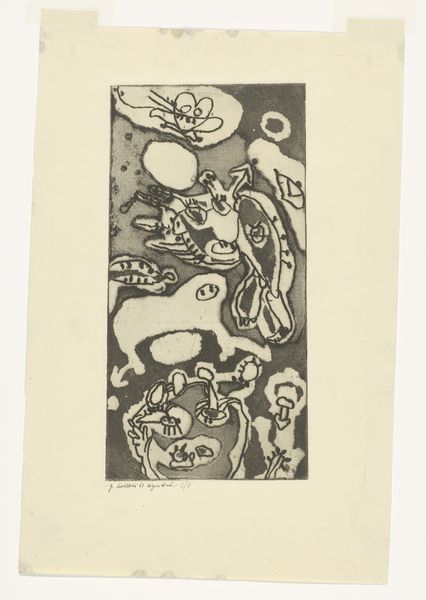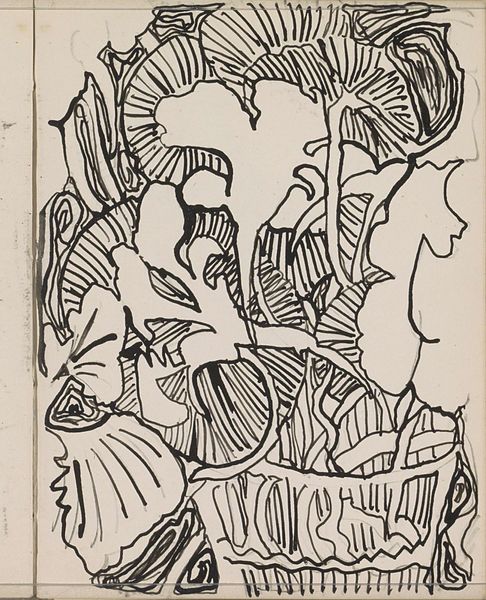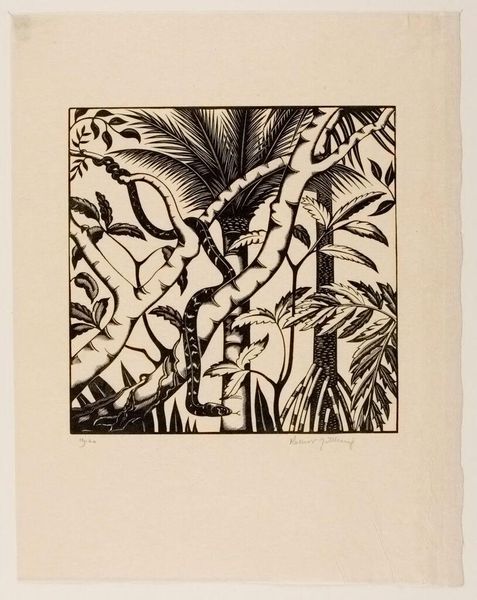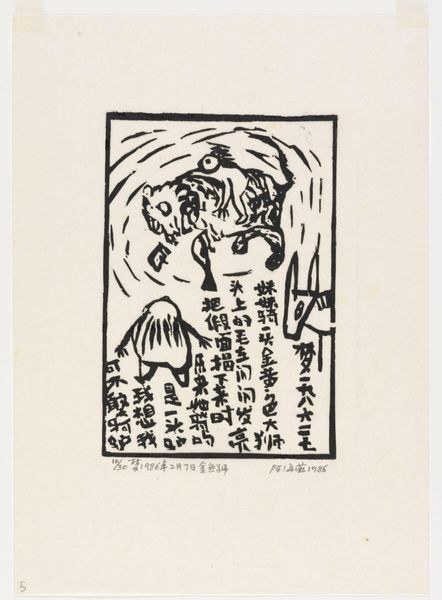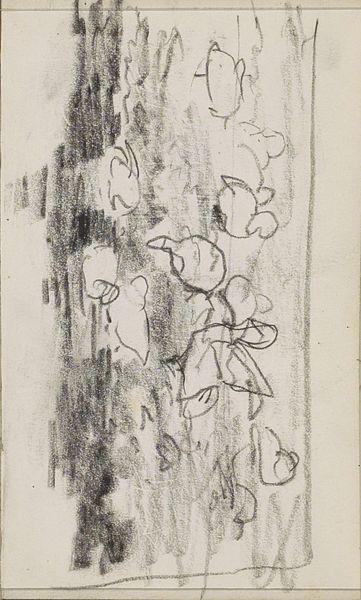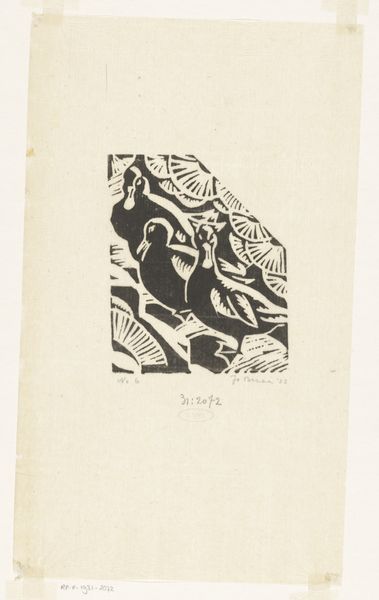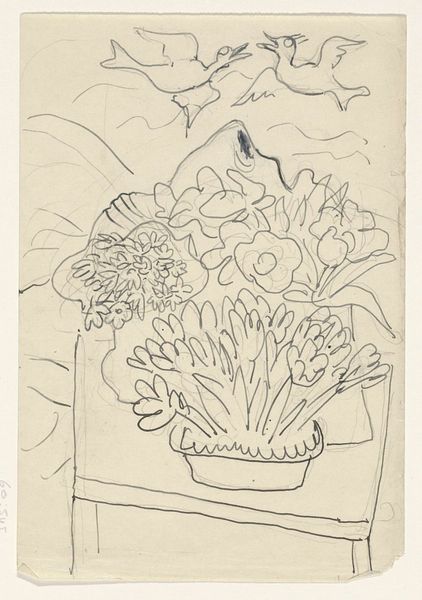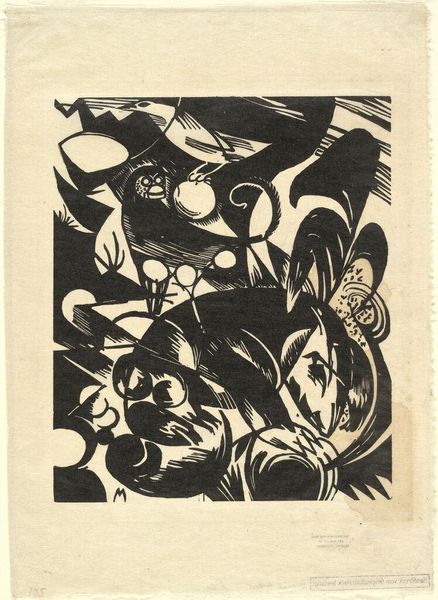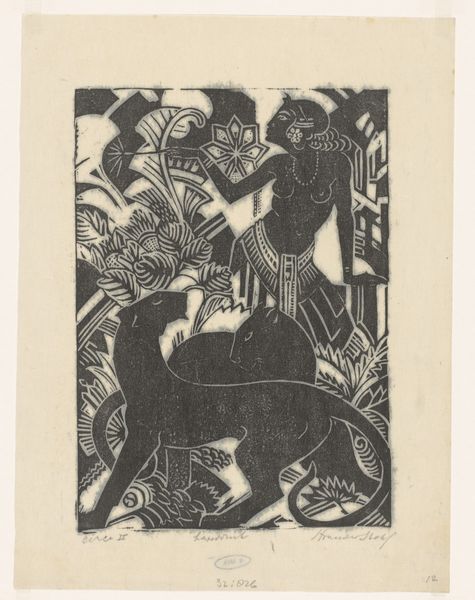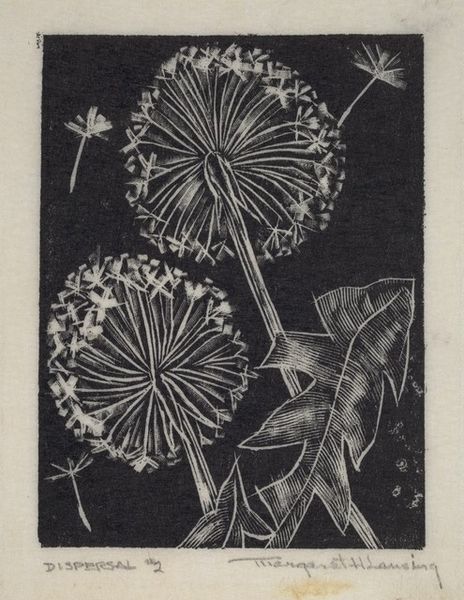
Copyright: Unichi Hiratsuka,Fair Use
Editor: Here we have "Plum," a striking black and white woodcut created in 1930 by Unichi Hiratsuka. The graphic simplicity almost feels bold and modern, yet there’s a clear nod to traditional Ukiyo-e. It makes me wonder, what else do you see in this piece beyond the obvious beauty of the blossoms? Curator: Oh, I think you’ve hit upon something crucial already! That tension between modernity and tradition *is* the heart of the work, isn't it? This print embodies the *Sosaku-Hanga* movement— artists who embraced the "self-carved print" ideal. Hiratsuka, carving and printing these himself, breaks from the collaborative *Ukiyo-e* system. The woodcut, with its stark contrasts and flattened perspective, elevates a simple bloom to an almost symbolic form. Do you notice how the lines feel almost… affectionate? Editor: Affectionate? I hadn't considered that. More like, carefully observed maybe? There’s something deliberate about the negative space too… like he's as interested in what isn’t there as what *is*. Curator: Exactly! It’s not merely decorative. Think about what the plum blossom signifies in East Asian art: perseverance, hope, the promise of spring. Hiratsuka isn't just depicting a flower; he's offering us a quiet meditation on resilience, carved with such, yes, such loving detail. Editor: So it's not just a pretty picture. It’s about… endurance. A celebration of nature and, in a way, a bit of the artist's soul. It really makes you consider the impact of something that seems so simple at first glance. Curator: Absolutely! And isn't that the magic of a truly great print? To draw you in, whisper its secrets, and leave you pondering long after you’ve walked away.
Comments
No comments
Be the first to comment and join the conversation on the ultimate creative platform.


